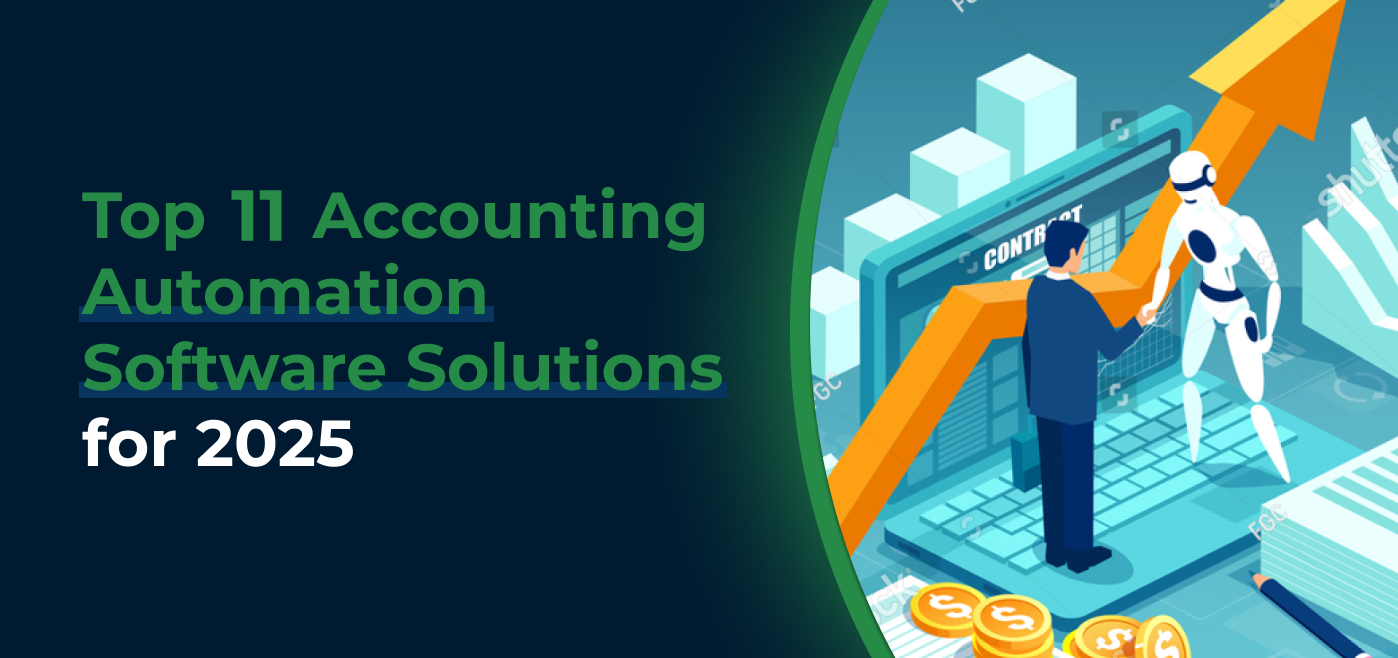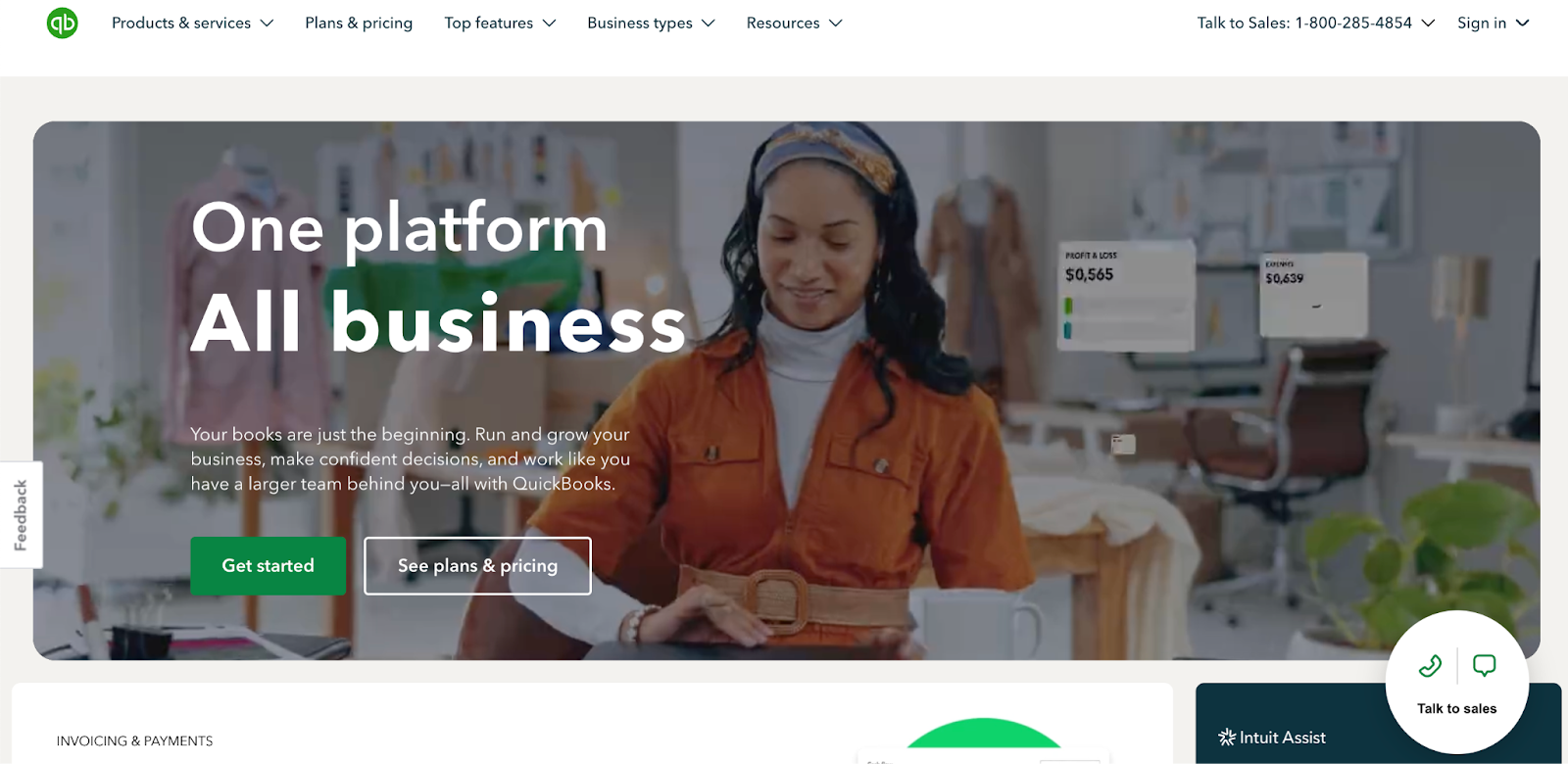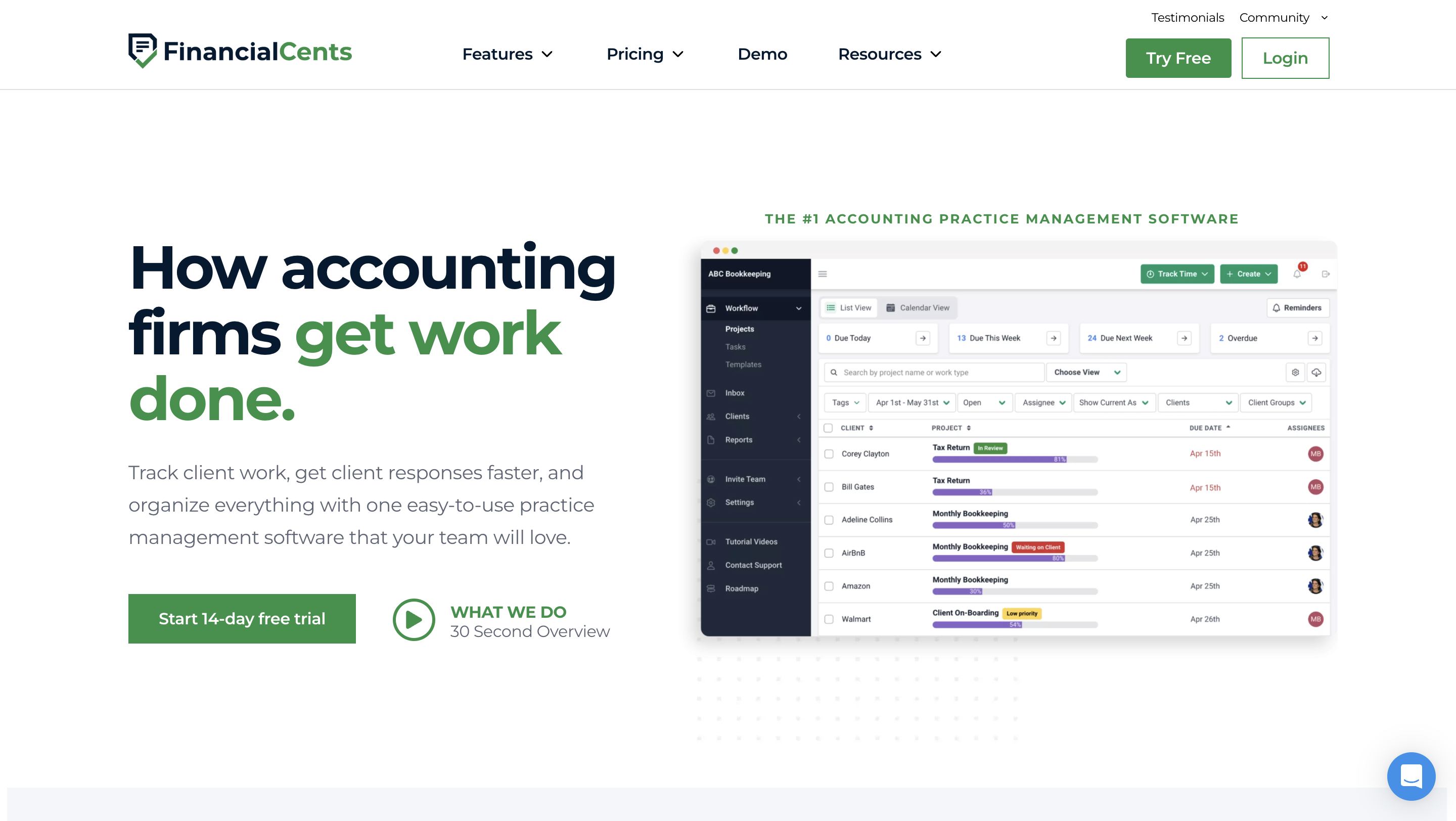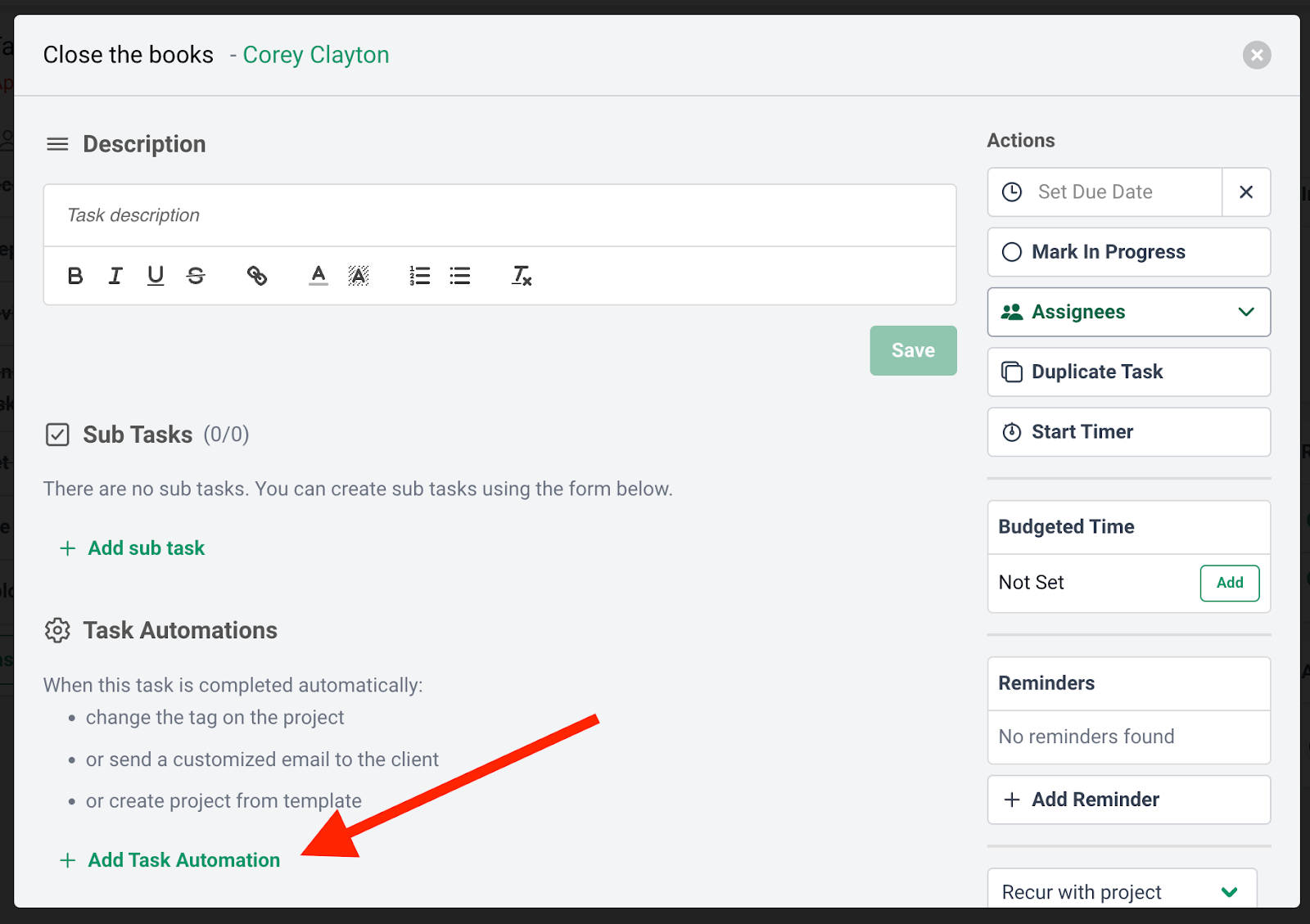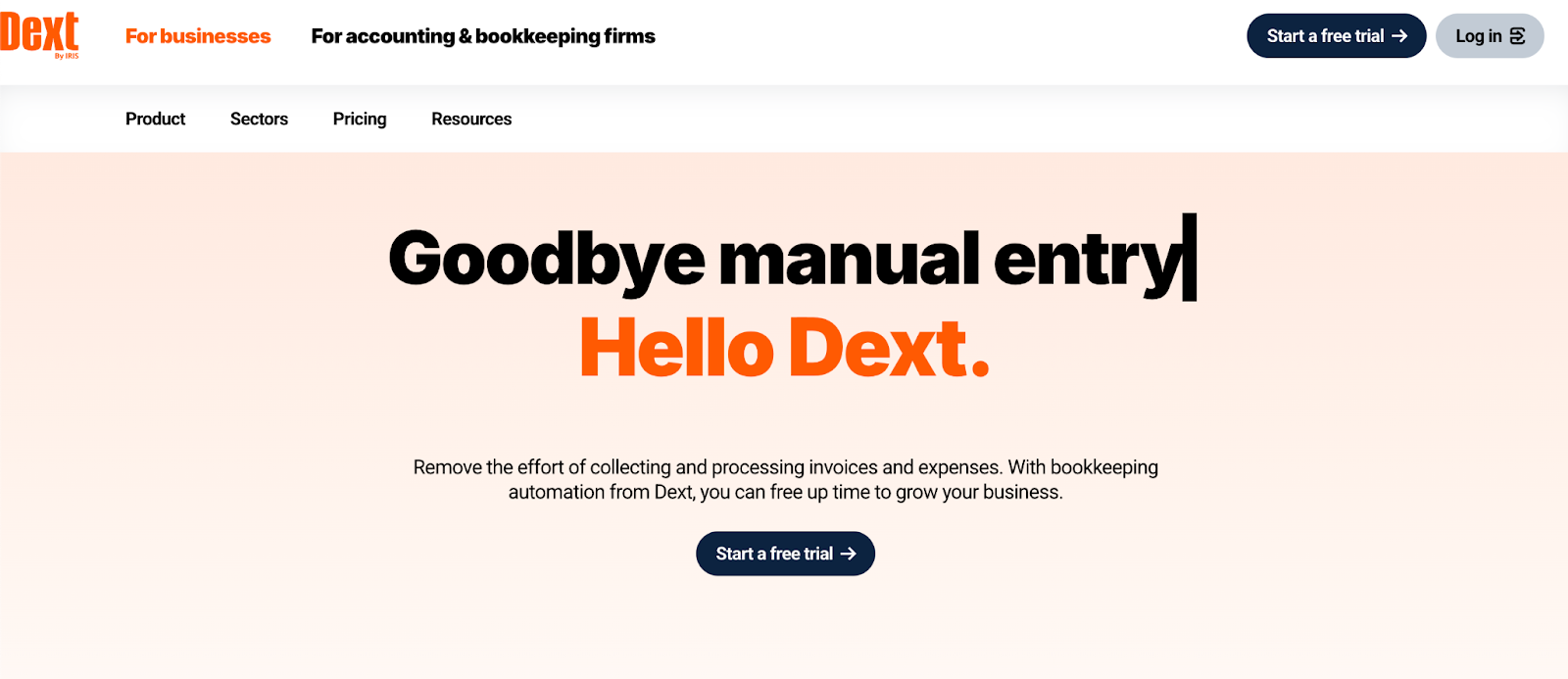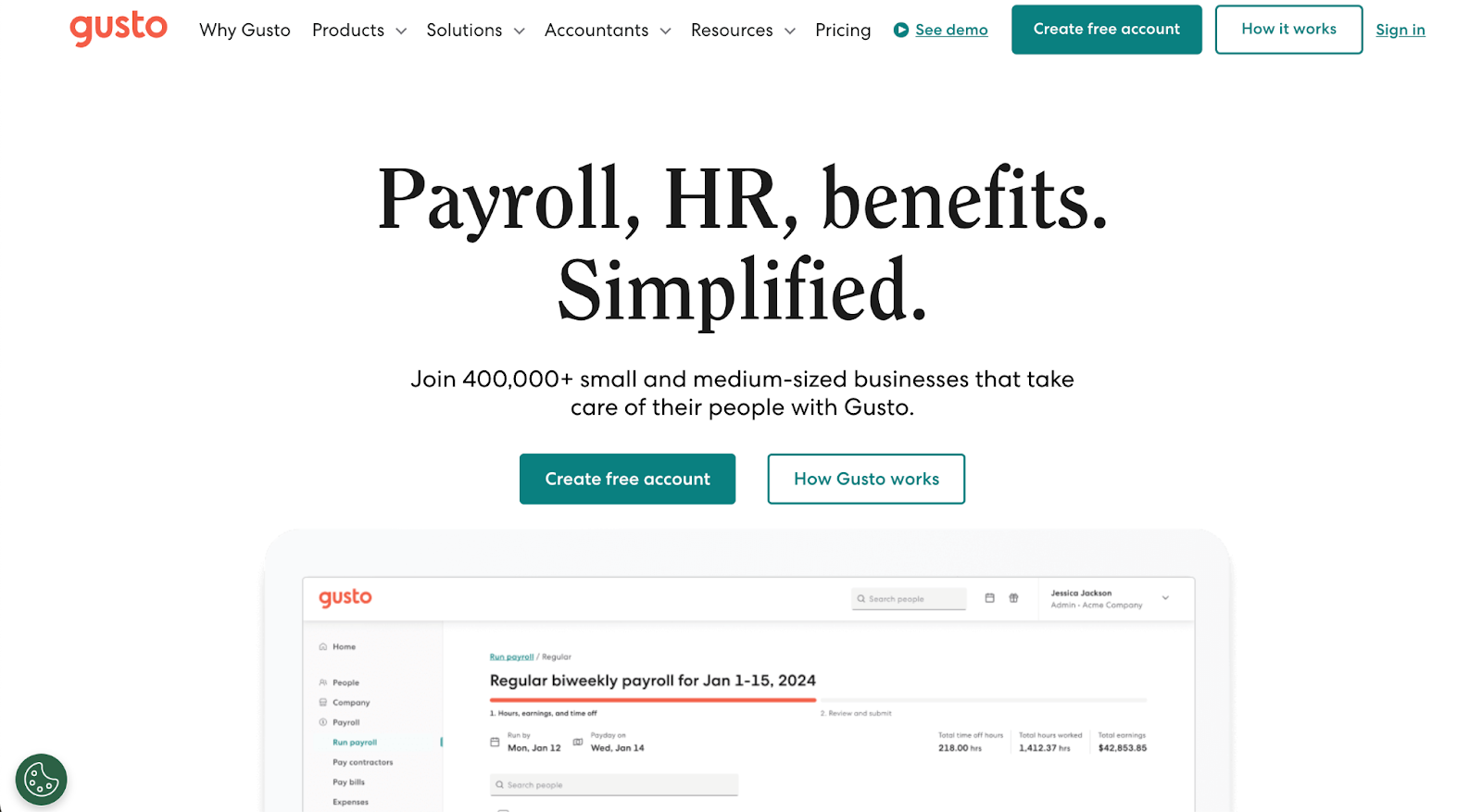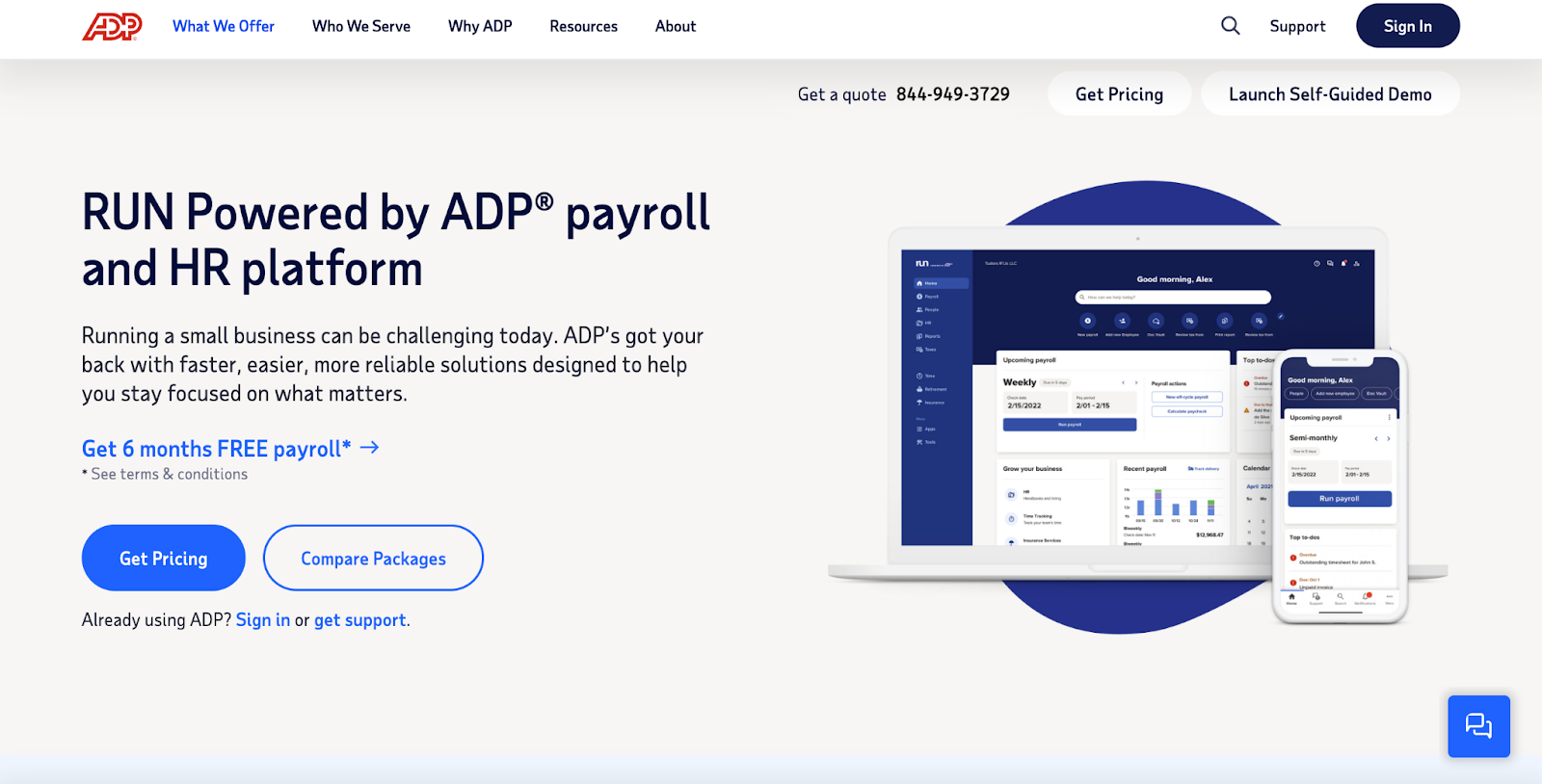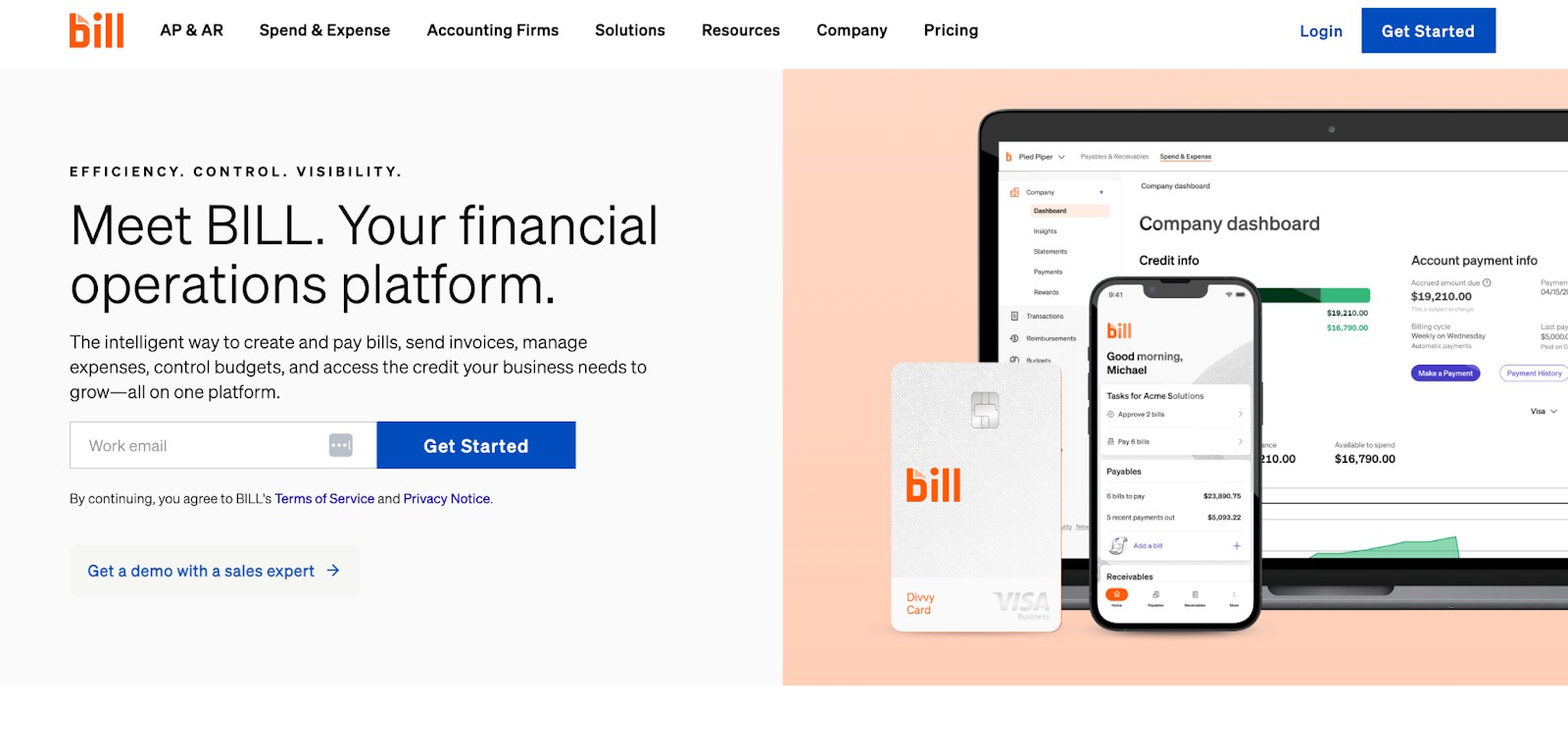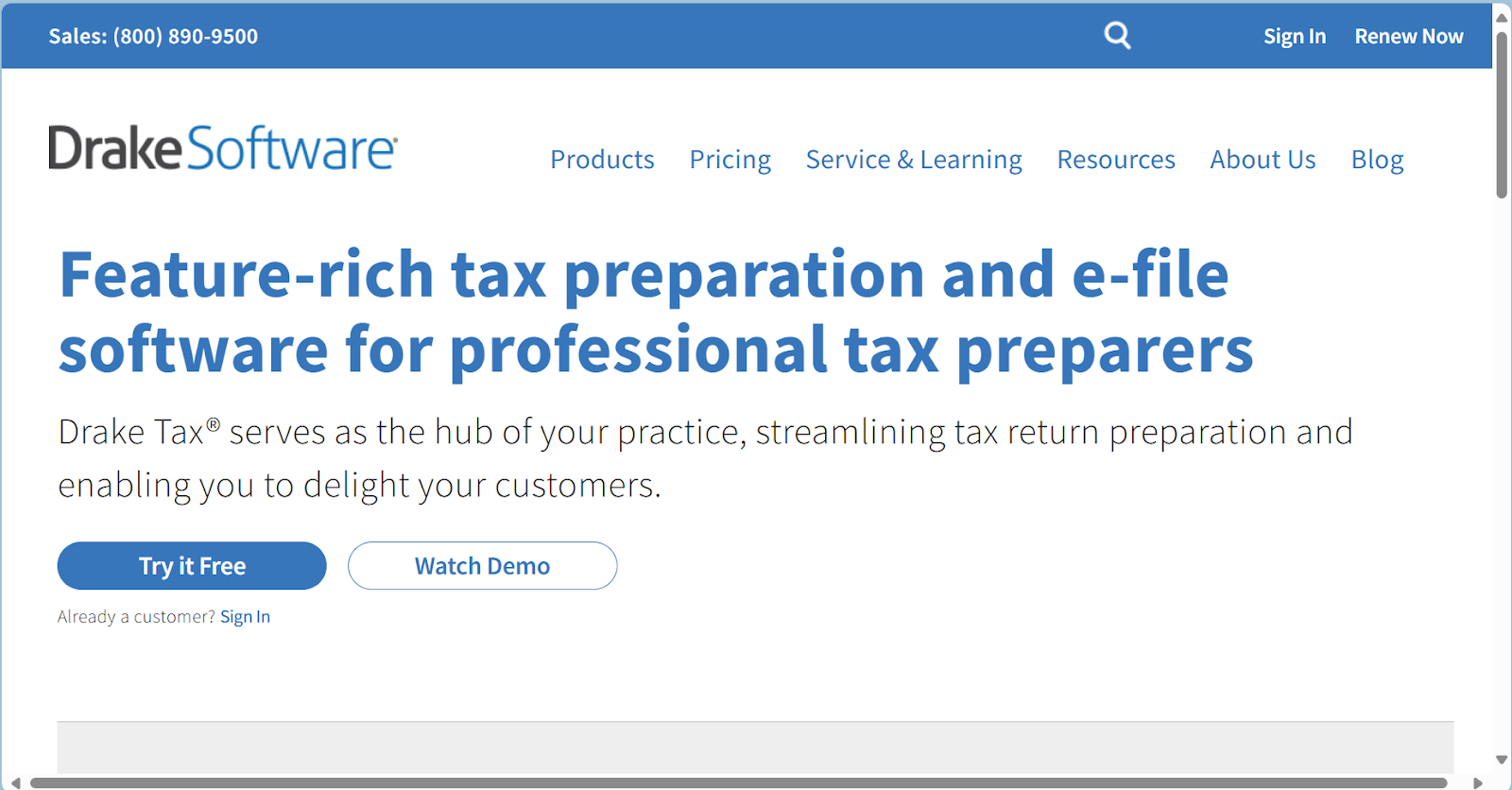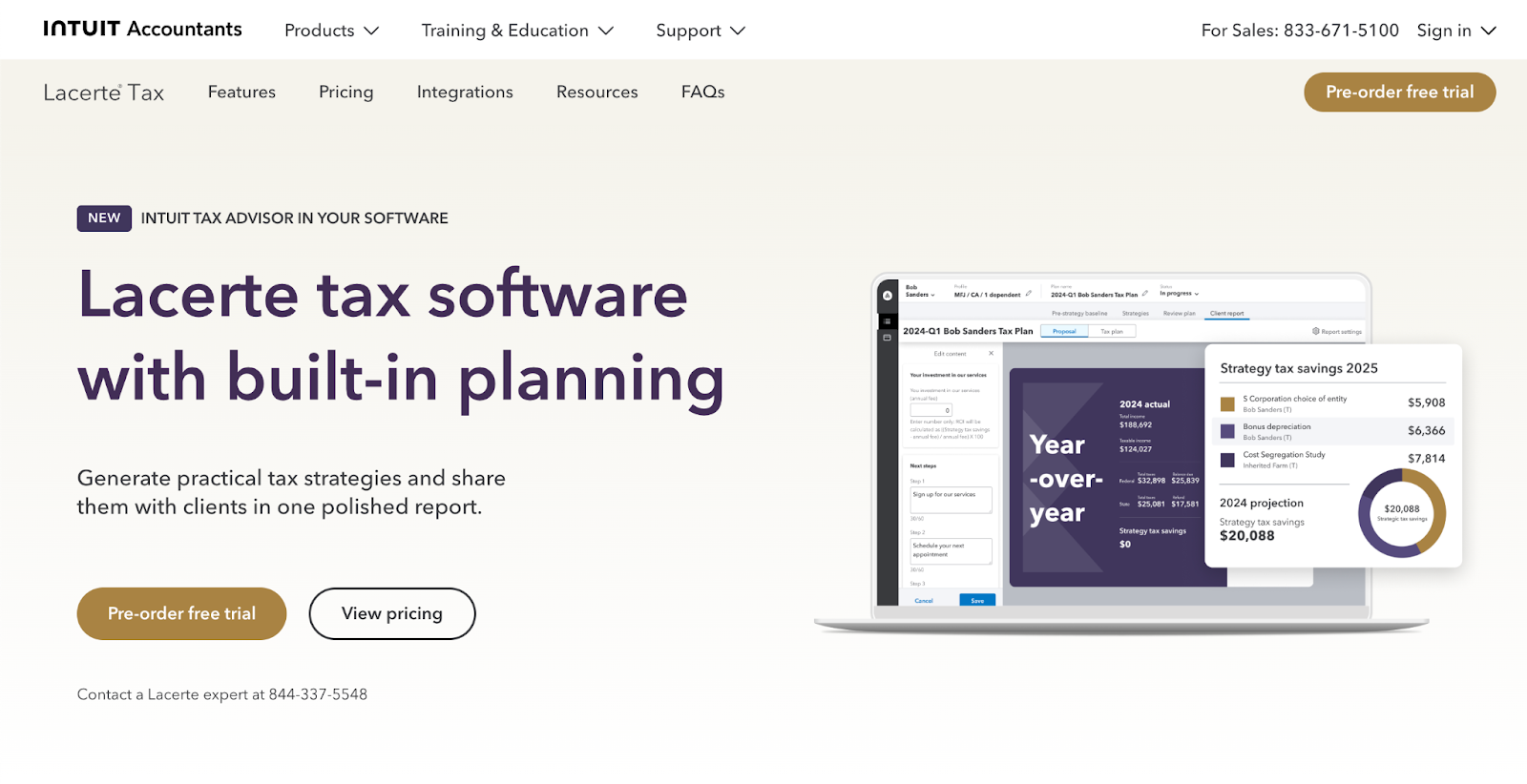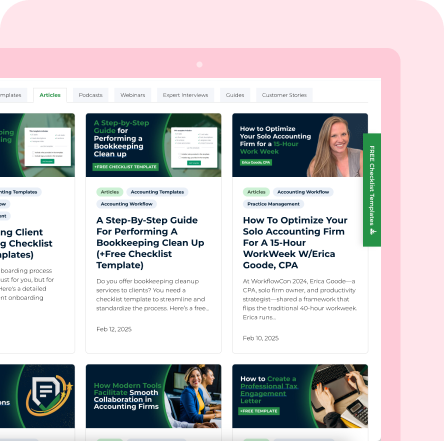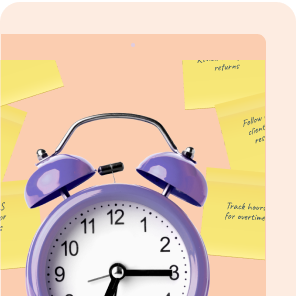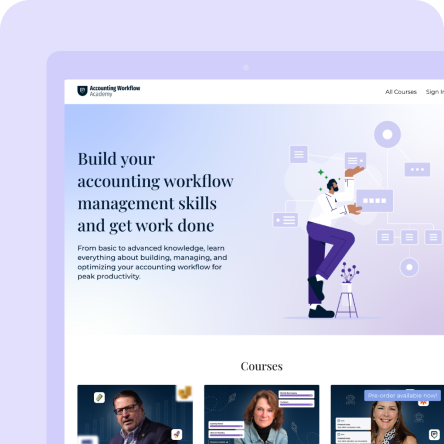Accounting firms today are under more pressure than ever. Talent shortages, tighter deadlines, increasing compliance demands, cybersecurity risks, and rising client expectations are just a few of the daily challenges they face.
In fact, the 2024 State of Accounting Workflow Automation report found that the biggest challenge for accounting firms last year was workflow (63% of all challenges). Client management (51.5%) and firm capacity management (44.9%) followed closely as the second and third most pressing concerns.
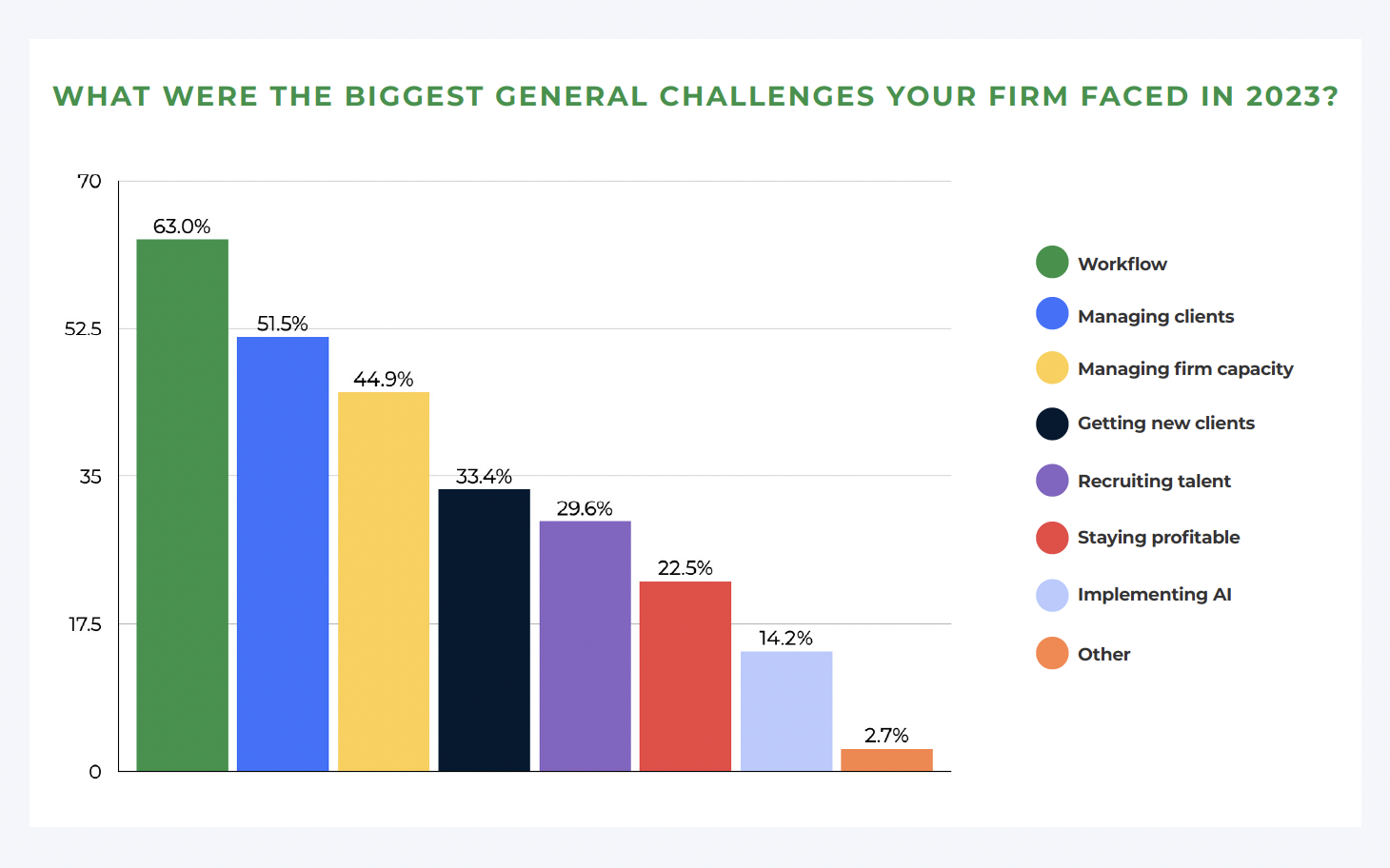
So, how are modern firms navigating these hurdles? By embracing accounting automation.
Gone are the days when accounting software simply digitized spreadsheets. Today’s solutions leverage AI, machine learning, and workflow automation to categorize transactions, reconcile accounts, and generate reports with minimal human input.
Firms that integrate these tools into their workflows save time, meet deadlines faster, collaborate better, and operate more efficiently. Most importantly, automation frees up staff to focus on higher-value tasks like client advisory services (CAS), strengthening client relationships, and scaling their firm.
But with so many automation tools available, how do you choose the right one? That’s where we come in.
We’ve done the research for you and compiled a list of the 11 best accounting automation software solutions that will help streamline your processes and grow your firm.
Let’s dive in.
Why Accounting Firms Need Automation Software
Accounting firms today operate in a fast-paced, high-pressure environment and so they need to find ways to work smarter, not harder. Accounting automation software helps in the following ways:
Save Time & Improve Efficiency
Repetitive tasks like data entry, invoice processing, and workflow scheduling can eat up hours of valuable time each week. Automation software eliminates these inefficiencies by streamlining processes, allowing your team to focus on higher-value work.
The impact of automation is clear. Before implementing it, 45.8% of firms spent an average of 1-5 hours per week just scheduling and assigning work, while 45.5% spent the same amount of time reviewing and updating work statuses, according to our workflow automation report.
After implementing automation, those numbers dropped significantly. 34.8% of firms now spend just 0-1 hour scheduling, and 33.5% spend only 0-1 hour reviewing work each week.
This massive time saving helps firms meet deadlines faster, boosts productivity, reduces burnout, and improves overall client service.
Reduce Manual Tasks
Chasing down client documents is one of the biggest workflow slowdowns for accounting firms. Manually requesting files and following up when clients don’t respond on time wastes valuable hours and creates inefficiencies that delay work.
Automation software eliminates these roadblocks by automating document requests, reminders, and follow-ups, ensuring a smoother, more efficient process.
The impact? 52.4% of firms in our report previously waited several days to receive client documents, causing workflow bottlenecks. However, after adopting automation, 45.5% reported that receiving client documents became fast and effortless.
Minimize Human Errors & Enhance Accuracy
Manual data entry leaves too much room for costly mistakes like misclassified transactions, incorrect numbers, or overlooked details, which can all lead to compliance issues and financial inaccuracies.
Automation software reduces these risks by standardizing processes and minimizing human intervention.
With automated data entry, reconciliations, and built-in error detection, firms can significantly improve accuracy in financial reports, tax filings, and compliance documentation. This helps prevent penalties and strengthens client trust by delivering precise, reliable financial insights every time.
Improve Workflow & Collaboration
Effective collaboration is the backbone of a well-functioning accounting firm, and automation software centralizes workflows, making it easier for teams to share information, track progress, and stay aligned on tasks.
Case in point: 32.9% of firms from our survey reported a significant improvement after implementing automation, saying their firm had become very collaborative. This is compared to the 53% of firms who only felt their teams were only somewhat collaborative before automation.
Enhance Client Service & Satisfaction
A seamless client experience is key to retention and long-term success. However, manual processes can make onboarding slow and frustrating for firms and their clients.
The numbers speak for themselves: 51.4% of firms struggled with clunky onboarding workflows before automation. However, 55.2% reported a significantly smoother onboarding process after adopting automation software, allowing clients to get up and running faster with minimal friction.
Automation simplifies client management, from document collection and e-signatures to real-time communication and task tracking. By reducing wait times and making interactions seamless, firms strengthen client relationships, improve satisfaction, and build a reputation for top-tier service.
Stay Compliant with Ease
Keeping up with evolving tax laws, financial regulations, and reporting standards can be overwhelming for accounting firms. Manual compliance tracking increases the risk of missing deadlines, misreporting data, or facing penalties.
Automation software helps firms stay compliant by automating tax calculations, generating accurate reports, and ensuring you meet deadlines. Many tools also come with built-in compliance checks, audit trails, and real-time updates on regulatory changes, helping firms reduce risk and avoid costly errors.
With automation, firms can easily maintain compliance, reduce stress, and focus more on providing value to their clients instead of worrying about regulatory pitfalls.
Strengthen Security
Cyber threats are on the rise, and accounting firms are prime targets. In 2023, the financial services industry experienced 744 data breaches—the second-highest among all sectors—according to the ITRC data breach report. Worse still, the total number of reported data compromises in the U.S. reached an all-time high.
Relying on manual processes, email-based file sharing, and weak access controls exposes firms to security risks, including data breaches and unauthorized access.
Automation software enhances security by offering encrypted document storage, multi-factor authentication, role-based access controls, and more. These features help firms safeguard client data, prevent fraud, and comply with data protection regulations.
Thinking of how to improve your firm’s security? Check out our cybersecurity for accountants guide.
Scale and Future Proof Your Firm
As accounting firms grow, it becomes harder to handle increasing workloads, onboard more clients, and expand services efficiently, especially if you have a manual workflow.
Automation software allows firms to scale by streamlining workflows, reducing manual tasks, and improving efficiency. That way, firms can take on more clients and larger projects without overwhelming their teams.
Investing in the right software today ensures your firm stays competitive and adaptable.
The 11 Best Accounting Automation Tools for 2025
We’ve categorized the top accounting automation tools below based on their primary functions to help you find the best fit for your firm.
General Ledger Accounting
Businesses use tools in this category to maintain and track all financial transactions in one centralized system. These tools automate transaction tracking, reconciliations and generate real-time financial reports for better decision-making.
1. QuickBooks
Developed by Intuit, QuickBooks Online helps small and medium-sized businesses manage their finances efficiently. It offers a comprehensive suite of tools for bookkeeping, invoicing, payroll, and more, all accessible through a user-friendly interface.
Key Automation Features
- Automated Invoicing and Payment: Create and send recurring invoices automatically. Also, schedule bill payments to ensure timely payments and avoid late fees.
- Bookkeeping Automation: Automatically categorize bank account transactions and set up rules for recurring transactions.
- Tax Management: Automatically calculates tax every quarter so you know how much money to set aside
Ratings
Capterra: 4.3 out of 5 stars, based on over 7,500 reviews.
G2: 4.0 out of 5 stars from over 3,300 reviews.
Free Trial
30-day free trial available.
Pricing
- Simple Start: $35 per month – includes basic features for one user.
- Plus: $99 per month – accommodates up to five users and includes inventory tracking and project profitability.
- Advanced: $235 per month- accommodates up to 25 years and includes more features than Plus, like auto-track fixed assets, workflow automation, and revenue recognition.
Pros & Cons
| Pros | Cons |
| Easy to navigate, even for those without extensive accounting knowledge. | New users may require time to become proficient with all features |
| With over 750 integrations, QuickBooks Online can connect to numerous apps, increasing its versatility. | Basic plans restrict the number of users, which may not suit growing businesses. |
2. Xero
Xero helps small businesses and SMEs manage their financial operations, including invoicing, expense tracking, payroll, and financial reporting.
Key Automation Features
- Invoicing Automation: Xero allows users to create and send invoices quickly with customizable templates and automated payment reminders.
- Bank Reconciliation: Seamlessly connects with bank accounts to automate transaction imports and reconciliation.
- Expense Management: Digitizes receipts and facilitates expense categorization and approval workflows.
Ratings
Capeterra: 4.4 out of 5 stars, based on over 3,000 reviews.
G2: 4.3 out of 5 stars from over 700 reviews.
Free Trial
30-day free trial available.
Pricing
- Early: $20 per month – limited to 20 invoices and five bills.
- Growing: $47 per month – offers unlimited invoices and bills.
- Established: $80 per month – includes advanced features like advanced cash flow predictions and project tracking.
Pros & Cons
| Pros | Cons |
| All plans support unlimited users, making it cost-effective for growing teams. | The lowest tier plan has caps on invoicing and bills so users have to upgrade if they need more than the limit. |
| Well-designed dashboard that presents complex accounting data in an understandable manner. | Mastering more complex functions (like report customizations or advanced integrations) may require time or additional training. |
Workflow Automation & Practice Management
These are tools for improving team collaboration, and managing client work more efficiently. Instead of relying on spreadsheets, emails, or manual tracking, these solutions automate task assignments, deadline tracking, document requests, and client communications.
3. Financial Cents
Financial Cents is an all-in-one practice management software designed specifically for accounting firms. It helps firms streamline their workflows, manage client relationships, automate repetitive tasks, collaborate internally, and meet deadlines, making it easier for them to scale their operations efficiently.
Key Automation Features
- Workflow Automation: Automates different manual tasks in your workflow like:
- Automated Status Updates: Financial Cents can automatically update project status tags (e.g., “Waiting on Client Info”) with Tag Automators based on task completion.
-
- Auto-Triggered Emails – Send customized emails to clients when a task or section is completed. This can include status updates, calendar invites, survey links, or document access instructions. You can set up this automation under the Tasks or on Sections within a project.
-
- Auto-Creation of Projects – Automatically generate a new project when a task or section is completed. For example, a client onboarding project can trigger the creation of a recurring monthly bookkeeping project.
-
- Automated Client Reminders – Automatically follow up with clients via email and SMS until they complete document requests, reducing delays and improving response times.
-
- Recurring Project Automation – Set up recurring projects (e.g., monthly bookkeeping) that auto-regenerate at set intervals, saving time and ensuring deadlines are always met.
- Email Management: Financial Cents can integrate with your email so you can easily turn email requests into projects in one click instead of manually creating a new project.
- Time Tracking & Billing: Automatically generates invoices based on tracked time, simplifying billing processes. It also automatically sends email reminders for upcoming and overdue invoices, so clients are always aware of their payment deadlines. This helps reduce the need for manual follow-ups.
Ratings
Capterra: 4.8 out of 5 stars, based on over 160 reviews.
G2: 4.8 out of 5 stars from over 110 reviews.
Free Trial
14-day free trial available.
Pricing
Financial Cents has four pricing tiers:
- Solo plan: $19/month
- Team plan: $49/month
- Scale plan: $69/month
- Enterprise: Custom pricing. Please contact sales for a quote.
Note: You get access to our proposal and invoicing feature with any Financial Cents subscription. However, some features like automated client reminders or auto-creating projects are only available on the scale plan, meaning you have to be on the scale plan to access them.
Pros & Cons
| Pros | Cons |
| User friendly interface. Intuitive and easy to use. | No mobile app. |
| Offers all you need to manage your firm. No need for additional tools. | You can only access some of the automation features if you upgrade from the solo plan. |
| Unlimited number of clients. | |
| Automatic invoicing and payment. |
Start a Free Trial or Book a Demo to explore how Financial Cents can help you automate work, hit deadlines, streamline your firm and manage clients.
Expense Management Automation
This software category automates the process of tracking, submitting, and approving business expenses. Instead of manually entering expenses, chasing receipts, and reconciling transactions, automation tools handle these tasks efficiently
4. Dext
Dext is a leading expense management automation tool designed to simplify capturing, categorizing, and managing financial data from receipts, invoices, and bills. Formerly known as Receipt Bank, Dext offers features to enhance bookkeeping efficiency and accuracy.
Key Automation Features
- Data Capture: Allows users to upload receipts, invoices, and bank statements via mobile app, email, or auto-invoice fetch, converting them into digital data.
- Data Extraction: Utilizes AI to extract relevant information from financial documents with over 99% accuracy, reducing manual data entry.
- Expense Categorization: Automatically categorizes expenses based on historical data for streamlined financial reporting.
Ratings
Capterra: 4.2 out of 5 stars, based on over 150 reviews.
G2: 4.5 out of 5 stars from over 250 reviews.
Free Trial
14-day free trial available.
Pricing
- Essential: Starts at $20/client/month for basic expense management.
- Advanced: Starts at $21.50/client/month with extra features like workflows and insights.
Pros & Cons
| Pros | Cons |
| Allows users to upload receipts and manage expenses on the go via a mobile app. | Can be expensive for small businesses with a limited budget. |
| Offers real-time insights through custom dashboards and predictive analytics. | It sometimes takes too long to read and process the document uploads. |
5. Expensify
Expensify simplifies business expense tracking, reporting, and reimbursement. It leverages AI and OCR (Optical Character Recognition) technology to automate receipt scanning and expense categorization.
Key Automation Features
- Receipt Scanning: Expensify’s SmartScan technology allows users to capture receipts using mobile devices, automatically extracting and categorizing pertinent information to minimize manual data entry.
- Bill pay app: Automate payments online and set up recurring payments for most services you pay for in one app instead of multiple apps.
- Corporate Card Reconciliation: Expensify integrates with corporate credit cards, automatically matching expenses to transactions, simplifying reconciliation processes.
Ratings
Capterra: 4.4 out of 5 stars, based on over 1,100 reviews.
G2: 4.5 out of 5 stars from over 5200 reviews.
Free Trial
Free plan for individuals with basic expense tracking features. 30-day free trial period for businesses.
Pricing
- Collect Plan: $5 per user per month with unlimited scans, bill pay & invoicing, and expense approval.
- Control Plan: $9 per user per month, with multiple expense approvers and budgeting.
Pros & Cons
| Pros | Cons |
| Integrates with major accounting software like QuickBooks, Xero, NetSuite, and Sage Intacct. | Interface and initial setup are confusing for some new users. |
| Mobile app for easy and instant scanning, tracking, categorization, etc. | Currency conversion rates may not always be up-to-date for certain countries. |
Payroll Automation
Payroll Automation tools make payroll easier for companies. They use technology for payroll tasks like calculating employee wages, withholding taxes, and ensuring compliance with labor laws.
6. Gusto
Gusto is a payroll and human resources platform that runs and automates payroll processes for businesses of all sizes. Founded in 2012 as ZenPayroll, Gusto has evolved to offer a comprehensive suite of tools that manage payroll, benefits, and compliance, serving over 400,000 businesses.
Key Automation Features
- Automated Payroll Processing: Gusto allows businesses to run payroll in minutes with its AutoPilot feature, which automatically calculates and pays employees based on set schedules.
- Tax Compliance: Automatically calculates, files, and pays federal, state, and local payroll taxes.
- Time Tracking: Integrates with time tracking tools to sync employee hours, paid time off (PTO), and holidays with payroll.
Ratings
Capterra: 4.6 out of 5 stars, based on over 4,000 reviews.
G2: 4.5 out of 5 stars from over 2,300 reviews.
Free Trial
No free trial, but you can use the software free until you run your first payroll.
Pricing
- Simple Plan: $49 per month base fee, plus $6 per person per month.
- Plus Plan: $80 per month base fee, plus $12 per person per month.
- Premium Plan: $180 per month, plus $22 per person per month.
Pros & Cons
| Pros | Cons |
| Employees can access pay stubs, update personal details, and manage benefits through a secure portal. | Primarily focused on the United States, which may not be suitable for businesses with international operations. |
| No extra charges to calculate and file your taxes. | There are so many helpful features, but it can get a bit overwhelming at first. |
7. ADP Run
RUN Powered by ADP is a cloud-based payroll and human resources (HR) platform tailored for small businesses. It improves payroll processing and offers additional HR functionalities to optimize workforce management.
Key Automation Features
- Automated Payroll: RUN automates recurring payroll on autopilot, so you don’t have to worry about manually running paycheck monthly.
- Automated Time Tracking: Time management tools to automate time entry and ensure accurate payroll processing.
- Tax Compliance: Automatic updates on the latest state and federal tax laws and HR regulations and filing W-2 and 1099 forms with the IRS.
Ratings
Capterra: 4.7 out of 5 stars, based on over 700 reviews.
G2: 4.5 out of 5 stars from over 1,700 reviews.
Free Trial
They don’t share this information publicly.
Pricing
Pricing details are not available on their website. You have to fill out a form and a rep will contact you.
Pros & Cons
| Pros | Cons |
| Beyond payroll, RUN offers HR tools, compliance updates, and employee management resources. | Lack of pricing transparency. You have to speak with a rep first. |
| As businesses grow, ADP offers advanced solutions that can accommodate expanding HR and payroll needs. | No one customer rep. You might have to deal with multiple contacts, making resolving issues harder. |
Accounts Payable & Receivable Automation
This category involves using technology to facilitate a company’s payment obligations and incoming payments. It helps businesses improve cash flow management and maintain better financial control.
8. BILL
BILL (formerly known as Bill.com) is a financial management platform that automates accounts payable (AP) and accounts receivable (AR) processes. It helps businesses streamline their financial operations by digitizing and automating bill payments, invoicing, and cash flow management tasks.
Key Automation Features
- Accounts Payable Automation: Bill automates invoice receiving, data entry, approval routing, and payment with a few clicks.
- Accounts Receivable Automation: Automates invoicing, tracks customer interactions, and sends reminders for overdue payments, helping businesses get paid faster.
- Multi-Payment Options: Offers various payment methods, including ACH and credit cards, making it easier for businesses to manage vendor and customer payments. You can also schedule and automate these payments.
Ratings
Capterra: 4.2 out of 5 stars, based on over 500 reviews.
G2: 4.4 out of 5 stars from over 1,200 reviews.
Free Trial
30-day free trial available
Pricing
- Essentials Plan: $45 per user/month.
- Team Plan: $55 per user/month.
- Corporate Plan: $79 per user/month.
- Enterprise Plan: Custom pricing with advanced features like enhanced security and premium support.
Pros & Cons
| Pros | Cons |
| Provides up-to-date cash flow projections for forecasting and planning. | Sometimes, users have process invoices manually. |
| Allows for customizable approval processes, ensuring that all payments are reviewed and authorized appropriately before disbursement. | Poor syncing time which makes the tool slow. |
9. FreshBooks
FreshBooks is an accounting software designed for small to medium-sized businesses, freelancers, and self-employed professionals. It offers financial management tools, including invoicing, expense tracking, time tracking, and reporting, to enhance accounting processes and improve financial oversight.
Key Automation Features
- Automated Invoicing: Create and send professional invoices automatically, set up recurring billing for regular clients, and accept online payments.
- Expense Tracking: Automatic import of expenses from bank accounts and credit cards, categorizes them, and attaches receipts, simplifying expense management.
- Time Tracking: Time tracking tools that automatically log billable hours, which can be directly linked to invoices, ensuring accurate billing.
Ratings
Capterra: 4.5 out of 5 stars, based on over 4,400 reviews.
G2: 4.5 out of 5 stars from over 800 reviews.
Free Trial
30-day free trial available.
Pricing
- Lite: $21 per month – Includes billing for up to 5 clients, unlimited invoices, expense tracking, and time tracking.
- Plus: $38 per month – Supports up to 50 clients and adds features like unlimited proposals and accountant access.
- Premium: $65 per month – Allows billing for unlimited clients and includes accounts payable.
- Select: Custom pricing – Tailored for businesses with complex needs, offering dedicated account management and customized services.
Pros & Cons
| Pros | Cons |
| Offers customizable invoice templates to reflect business branding. | The Lite and Plus plans have client limits, which could be restrictive for growing businesses. |
| Mobile apps for iOS and Android, allowing users to manage their finances on the go. | Adding team members incurs extra fees, increasing costs for businesses with multiple users. |
| Accounts Payable features are available only in higher-tier plans. |
Tax Preparation & Compliance Automation
These software solutions streamline preparing, filing, and ensuring compliance with tax regulations. They keep businesses up-to-date with ever-changing tax laws.
10. Drake Tax
Drake Tax facilitates the efficient preparation and filing of federal and state tax returns, catering to individual and business clients. It supports various tax forms, including personal and business returns, making it versatile for different tax preparation needs.
Key Automation Features
- Instant Calculation Results: Immediate access to calculation outcomes and full return views, accelerating the tax preparation process.
- Dynamic Auto-Fill: With access to an EIN database, Drake Tax automatically completes business information on forms such as W-2, W2G, and 1099, reducing manual data entry.
- E-Signature: Enables digital signatures for tax forms, eliminating the need for manual signatures.
Ratings
Capterra: 3.8 out of 5 stars, based on over 100 reviews.
G2: 4.5 out of 5 stars from over 20 reviews.
Free Trial
Free trial available
Pricing
- Drake Tax Pro: $2,495 for unlimited individual and business returns, supporting unlimited users. $2,195 for a single user.
- Drake Tax 1040: $1,995 for unlimited individual returns, supporting unlimited users. $1,795 for a single user.
- Pay-Per-Return: $349.99, which includes 10 individual returns; additional returns are priced at $39.99 each. Same price for unlimited and single users.
Pros & Cons
| Pros | Cons |
| No additional fees for e-filing. | It only works with Windows and does not support Mac. |
| Online community to connect with other tax professionals to find answers, discuss industry news, and build your network. | Initial learning curve for new users. |
11. Lacerte Tax Software
Lacerte Tax is a professional tax preparation software developed by Intuit, designed to assist accounting firms and tax professionals in managing complex tax returns efficiently.
Key Automation Features
- Comprehensive Tax Form Library: Access to over 5,700 tax forms covering various tax scenarios, including individual, corporate, partnership, fiduciary, and nonprofit returns.
- Advanced Diagnostics: Over 25,000 automatic error-checking diagnostics to identify potential issues before filing, enhancing accuracy and reducing the likelihood of audits.
- Integration with QuickBooks: Seamless integration with QuickBooks Accountant Desktop allows for direct import of financial data, minimizing manual data entry and errors
Ratings
Capterra: 4.4 out of 5 stars, based on over 10 reviews.
G2: 4.2 out of 5 stars from over 48 reviews.
Free Trial
Free trial available.
Pricing
For Traditional Lacerte desktop software pricing plans:
- Lacerte REP (Fast Path only): $489 per year, with pay-per-return on 1040s.
- Choice: Custom pricing, offering bundles of individual and business returns.
- Unlimited Modules: Custom pricing, providing unlimited 1040s.
For Packages with remote access and digital signatures, contact Lacerte for a sales quote.
Pros & Cons
| Pros | Cons |
| Handles complex tax scenarios, including multi-state filings and various entity types | It’s quite pricey especially for smaller businesses. |
| The extensive diagnostic checks help ensure precise tax preparation, reducing the risk of errors. | Can be challenging for new users to master all advanced features. |
Factors to Consider When Selecting an Automation Tool for Your Accounting Firm
When evaluating potential solutions, consider the following factors:
Functionality/Features
First and foremost, assess whether the software meets your firm’s specific needs. Do you need automation for general ledger accounting, expense management, or tax preparation? Make a list of your needs and go for a tool that meets most, if not all of them.
Firm Size
Some tools are best suited for solo practitioners and small firms, while others cater to mid-sized and large accounting firms. Ensure the software can handle your firm’s client volume, complexity of transactions, and multi-user access needs and also scale with you.
Budget
Cost matters, but don’t just go for the cheapest option. Consider value for money. Some software charges per user, per transaction, or based on features. Compare pricing models and ensure the tool aligns with your firm’s budget while delivering essential automation benefits.
Integrations
Your automation tool should seamlessly integrate with your existing software stack. Whether you use QuickBooks, Xero, Microsoft 365, or tax compliance tools, ensure the software allows easy data exchange to avoid manual workarounds.
Time Savings
One of the main reasons firms adopt automation is to save time and cut operational costs. Evaluate how much time the tool can save by reducing manual work, eliminating errors, and streamlining processes. Check user testimonials and reports that highlight time savings and productivity boosts.
Ease of Use
Even the most feature-packed tool won’t be helpful if it’s challenging to use. Look for software with an intuitive interface, good customer support, and training resources. A short learning curve ensures your team can maximize automation benefits quickly.
Start Using Automation Software Today
Accounting automation is a necessity for firms that want to stay competitive in 2025. With tighter deadlines, increasing compliance demands, and higher client expectations, manual processes simply won’t cut it anymore. The right automation tools can help your firm save time, reduce errors, improve collaboration, and deliver more value to clients.
If you’re just getting started, don’t feel pressured to automate everything at once. Pick one or two software solutions that align with your firm’s biggest pain points, whether it’s general ledger accounting, workflow automation, or expense management. Once you see the benefits, you can gradually incorporate more tools to further streamline your operations.
One software worth considering is Financial Cents, an all-in-one accounting practice management solution. It helps firms automate task management, track deadlines, collaborate with teams, and manage client work seamlessly. Built-in features like workflow automation, time tracking, document management, and CRM capabilities eliminate the need for multiple software solutions, making it easier to scale your practice efficiently.
Ready to take the next step? Start a free trial or book a demo with Financial Cents today and experience firsthand how automation can transform your accounting firm.
